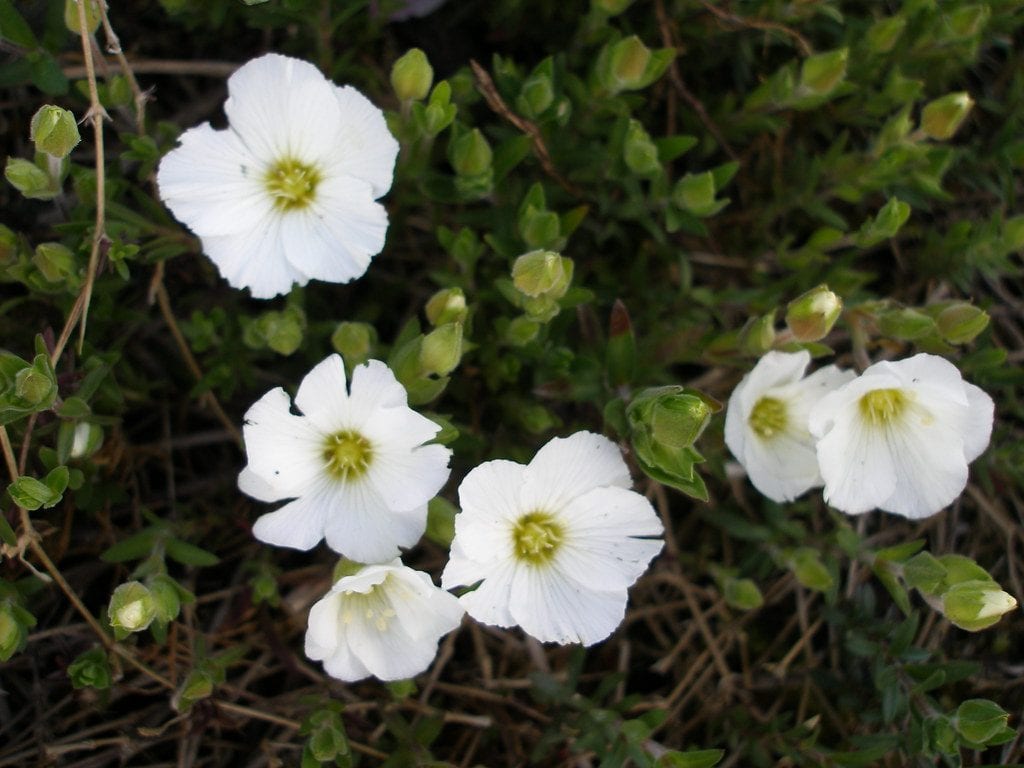
Image - Flickr / Niall McAuley
La sandstone is the name given to a series of plants that, due to their size and the beauty of their flowers, are perfect for growing on balconies, terraces and of course also in gardens. Keeping them perfectly healthy is not complicated, since with having them in the sun and watering them from time to time they will be happy.
Also, they are quite resistant to pests and diseases, so you don't have to worry about that 😉. Let's get to know them better.
Origin and characteristics of arenaria
Our protagonists are annual, biennial or perennial herbaceous plants originating in Europe, where in the Iberian Peninsula for example we have 10 species only in the Murcia Region of the 1400 species that have been described. They grow to a height of about 40 centimeters, with opposite, whole, green leaves.
The flowers are grouped in clusters, and are white, pink, or rarely purple. The fruit is a dry capsule that contains small, globose, black seeds.
Main species
The most popular species are the following:
arenaria grandiflora
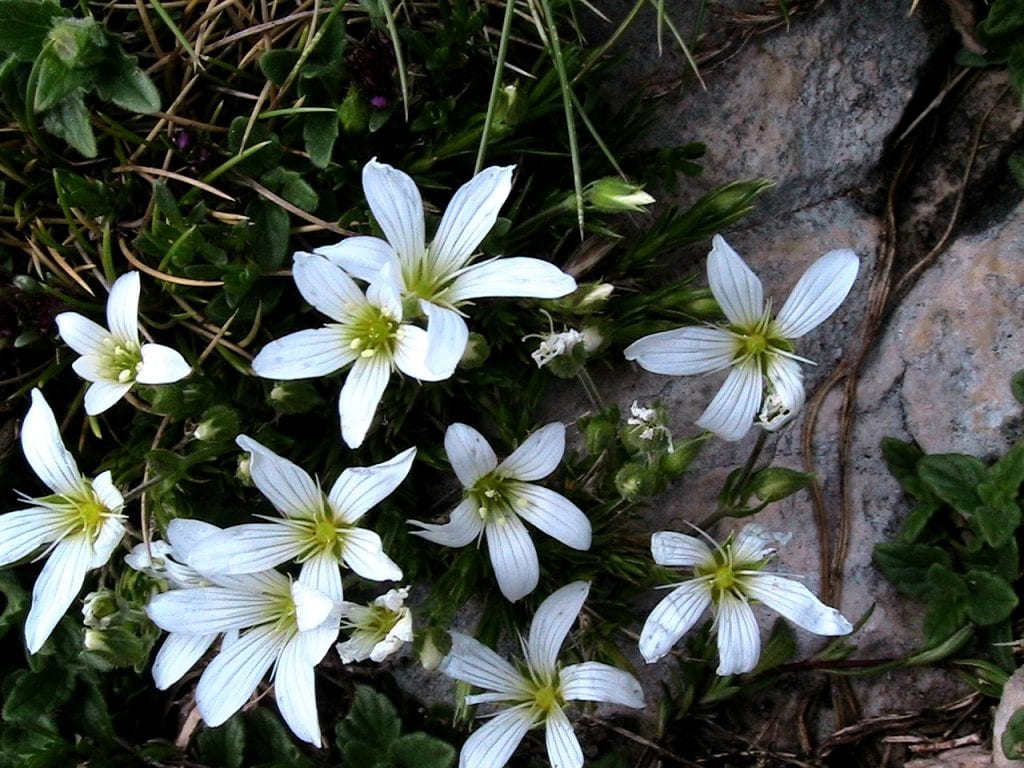
Image - Wikimedia / Isidre blanc
It is a tussock plant known as stone grass native to the Western Mediterranean. Reaches between 30 and 50 centimeters, with more or less erect stems from which lanceolate to linear leaves sprout. Produces white flowers.
montane sandstone
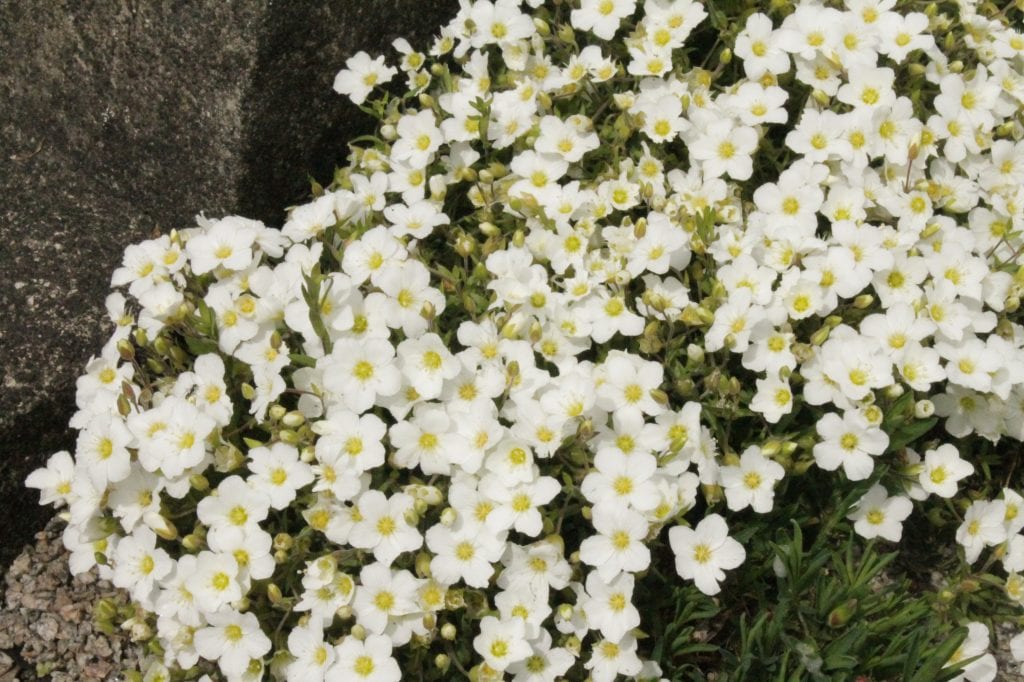
Image - Wikimedia / Stephencdickson
Native to southwestern Europe, it is a branched tussock plant that reaches between 30 and 50 centimeters in height. The leaves are between 1 to 3 centimeters long, and they are green. Its flowers are white.
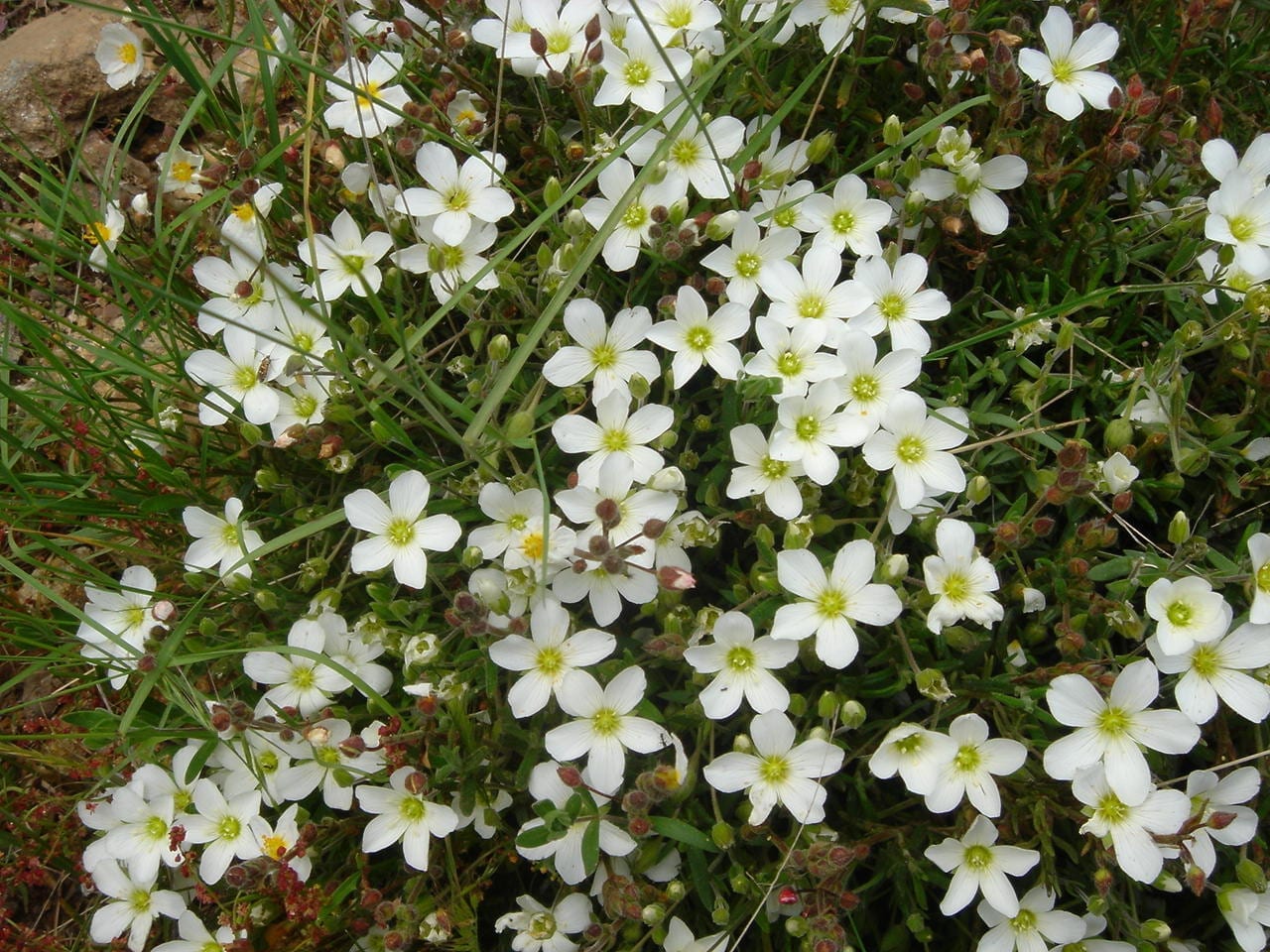
Arenaria nevadensis
It is an annual cycle herb endemic to Spain, specifically the Mediterranean. Grows up to 10 centimeters tall, with erect stems from which ovate to lanceolate green leaves sprout. Produces white flowers.
Unfortunately, it is critically endangered due to habitat loss. You have more information at this website of the International Union for Conservation of Nature.
Arenaria serpyllifolia
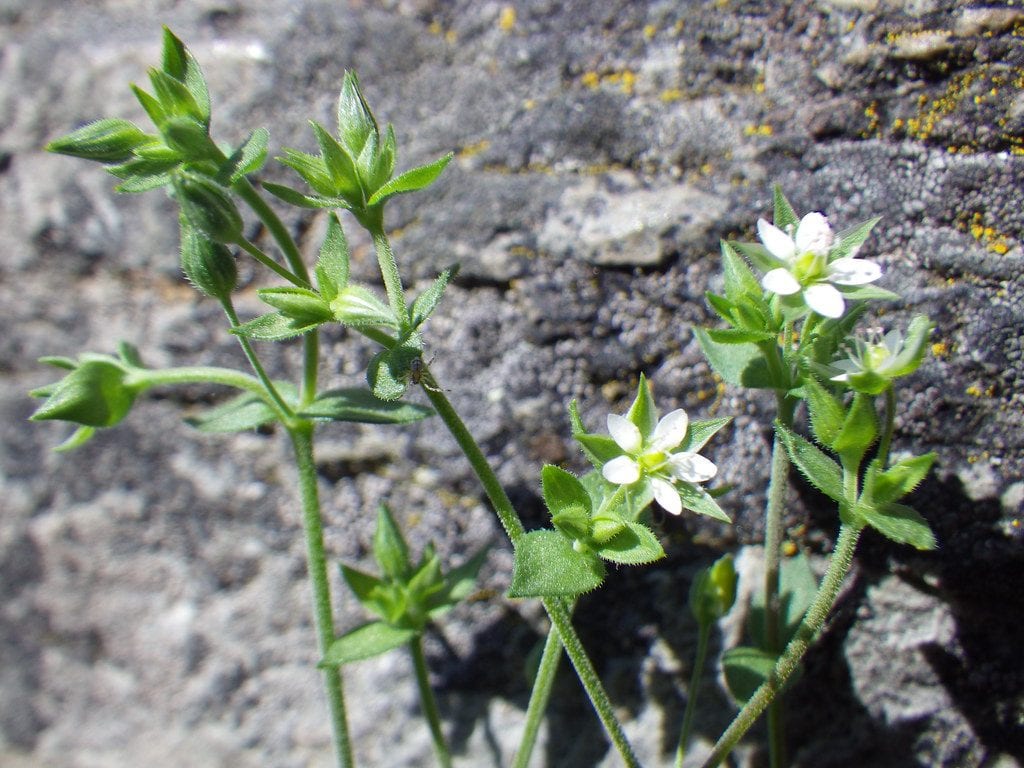
Image - Flickr / Matt Lavin
It is an annual or biennial herb native to Europe that reaches 10 to 30 centimeters in height. It produces ovate leaves 4 to 12mm long by 3 to 7mm wide, green in color. Its flowers are white.
What are their cares?
If you want to have a copy, we recommend that you provide it with the following care:
Location
Put your arenaria abroad, either in full sun or in semi-shade. These plants do not have invasive roots, so if you are going to plant it in the ground you can put it near pipes, walls, and others since it will not cause you any problem 😉.
Earth
- Garden: it grows in all types of soils, except in very acidic soils with a pH of 4-5, and as long as they have good drainage.
- Flower pot: fill with universal substrate (for sale here) with 30% of perlite. You can also use mulch or compost.
Irrigation
Irrigation it has to be moderate. He does not like waterlogging, so it is important that he water only when necessary; that is, when the earth is losing moisture.
Keep in mind that it is much easier to recover a plant that is drying than another that is drowning, so if in doubt, check the humidity of the soil, for example by inserting a wooden stick.
Subscriber
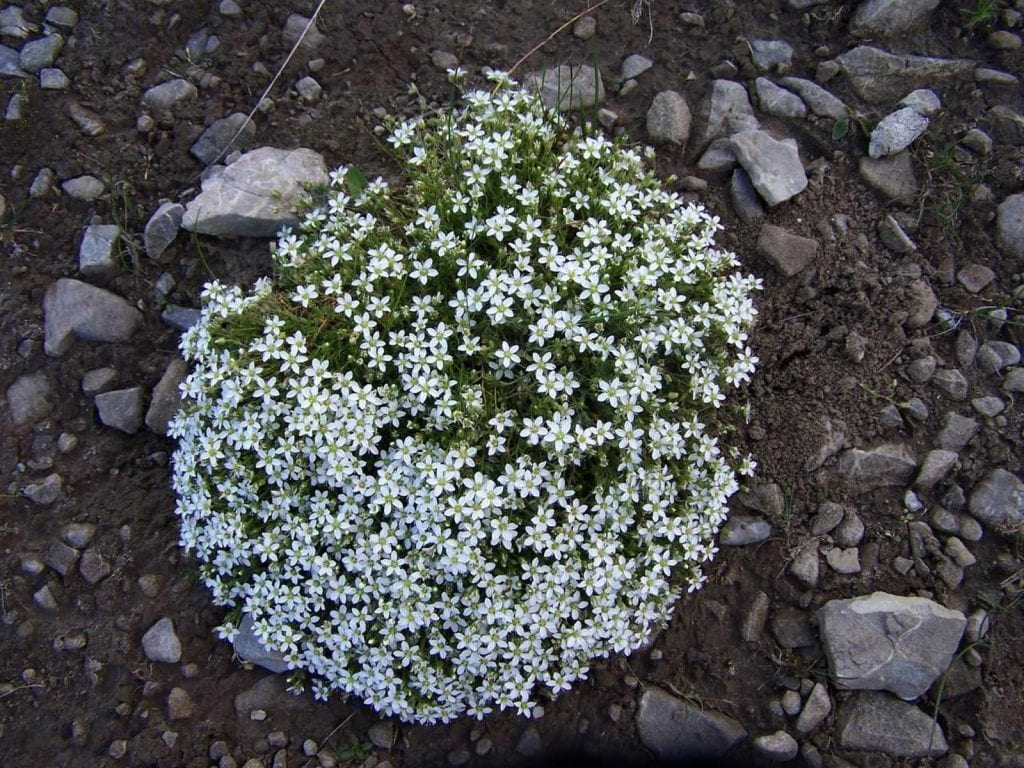
Image - Wikimedia / Jerzy Opioła
Water is as necessary as 'food'. To get your arenaria to be beautiful, it is highly recommended to pay it from spring to late summer with organic products, such as guano or herbivorous animal manure. Now, you can also use fertilizers if you are only going to use it as an ornamental plant.
Multiplication
It multiplies by seeds in spring, following this step by step:
- First, a seedbed is filled (it can be a flowerpot, a container of milk or yogurt, clean and with a small hole in the base through which the water can come out) with universal substrate.
- Then, it is watered conscientiously, soaking the whole earth well.
- Afterwards, the seeds are placed on the surface, ensuring that they are as far apart as possible.
- They are then covered with a thin layer of substrate.
- Finally, it is watered again, this time with a sprayer, and the seedbed is placed outside, in an area protected from direct sun.
So they will germinate soon, in about 10 days.
Planting or transplanting time
En spring, when the frosts have passed.
If you have it in a pot, transplant it to a larger one when roots grow out of the drainage holes.
Plagues and diseases
It is very resistant in general, but if the care is not adequate, for example, if it is watered excessively, it can become weak and thus attract fungi and insects that could become pests.
If this occurs, the former are treated with fungicides, and for insects there is a very effective natural product that is diatomaceous earth (for sale here).
Rusticity
It depends on the species. Most are annual or biennial, which do not resist cold, much less frost. However, the lively ones, like the montane sandstone or the arenaria grandifloraThey can withstand weak frosts down to -4ºC.
What uses are they given?
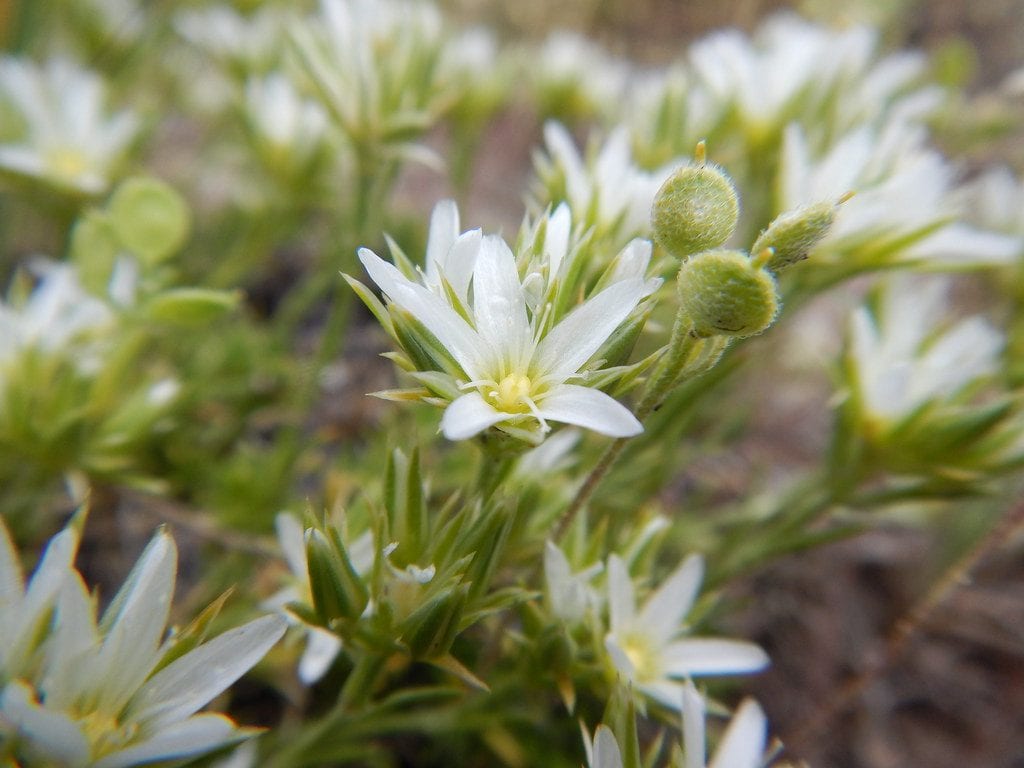
Image - Flickr / Matt Lavin
The Arenaria they are very decorative plants. They are interesting to grow in pots, planters and in gardens.
What do you think?